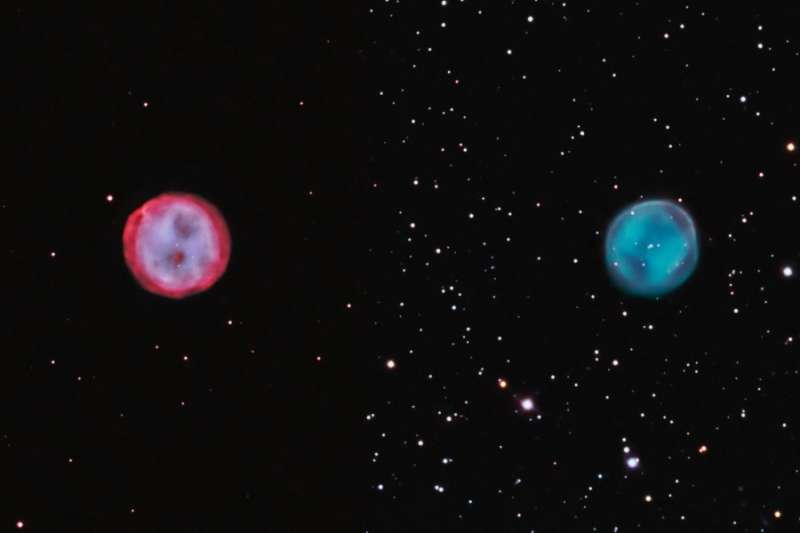Credit & Copyright: Don Goldman
Explanation:
Captured in colorful telescopic portraits,
two cosmic owls
glare back toward planet Earth in this
intriguing comparison of
planetary nebulae.
On the left is M97 in the
constellation Ursa Major,
also known in the northern hemisphere as the Owl Nebula.
On the right is its visual counterpart, the
southern Owl Nebula
in the constellation Hydra, cataloged as PLN 283+25.1.
Both nebulae are remarkably
symmetric, round, and similar in size,
some 2 light-years across or about 2,000 times the diameter
of Neptune's orbit.
Planetary nebulae
are produced during a final phase in the
life of a sun-like star, an example of the fate that awaits
the Sun when it runs out of nuclear fuel in another 5 billion years.
Both images were made using narrowband
filters and different color mappings.
The image of the southern Owl also includes broadband data,
bringing out the surrounding star field.
1999 2000 2001 2002 2003 2004 2005 2006 2007 2008 2009 2010 2011 2012 2013 2014 2015 2016 2017 2018 2019 2020 2021 2022 2023 2024 2025 |
Январь Февраль Март Апрель Май Июнь Июль Август Сентябрь Октябрь Ноябрь Декабрь |
NASA Web Site Statements, Warnings, and Disclaimers
NASA Official: Jay Norris. Specific rights apply.
A service of: LHEA at NASA / GSFC
& Michigan Tech. U.
|
Публикации с ключевыми словами:
planetary nebula - Планетарная туманность - Эволюция звезд
Публикации со словами: planetary nebula - Планетарная туманность - Эволюция звезд | |
См. также:
Все публикации на ту же тему >> | |
